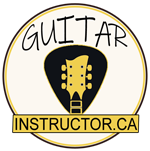
[ad_1]
Master the Fretboard: Guitar Music Theory Lessons for All Levels
If you’re a guitar player, you know the importance of understanding music theory and how it applies to the fretboard. Whether you’re a beginner, intermediate, or advanced player, there’s always more to learn and discover when it comes to mastering the fretboard. In this article, we will provide an in-depth guide to guitar music theory lessons for all levels, helping you take your guitar playing to the next level.
Level 1: Beginner Lessons
If you’re just starting out on the guitar, it’s essential to build a strong foundation in music theory. Understanding the basics of the fretboard, notes, and chords is crucial for any guitar player. Here are some beginner lessons to get you started:
– Introduction to the Fretboard: The fretboard is the area of the guitar where you place your fingers to play different notes and chords. Understanding the layout of the fretboard is essential to becoming a proficient guitar player.
– Notes on the Fretboard: Learning the names and locations of the notes on the fretboard is crucial for playing melodies and chord progressions. Start by memorizing the notes on the bottom E string and work your way up to the high E string.
– Chords and Chord Progressions: Understanding how chords are built and how they work together in a progression is essential for any guitar player. Start by learning basic open chords such as G, C, and D, then progress to barre chords and more advanced voicings.
Level 2: Intermediate Lessons
Once you have a solid foundation in music theory and the basics of the fretboard, it’s time to move on to more advanced concepts. Here are some intermediate lessons to help you take your guitar playing to the next level:
– Scales and Modes: Understanding scales and modes is essential for soloing and improvisation. Learn the major and minor scale patterns, as well as the modes such as Dorian, Phrygian, and Lydian.
– Arpeggios and Sweep Picking: Arpeggios are the building blocks of chords and are essential for lead guitar playing. Practice arpeggio shapes and incorporate sweep picking techniques for a more fluid and musical sound.
– Fretboard Visualization: Mastering the fretboard requires being able to visualize the notes and shapes across the entire neck. Practice exercises that challenge your ability to move seamlessly across the fretboard in different positions.
Level 3: Advanced Lessons
For advanced guitar players, there are always new frontiers to explore when it comes to music theory and the fretboard. Here are some advanced lessons to help you continue your musical journey:
– Advanced Chord Voicings: Explore jazz and fusion guitar voicings that extend beyond the basic major and minor chords. Learn complex voicings such as 9ths, 11ths, and 13ths and how to use them in various musical contexts.
– Modal Interchange and Harmonic Minor: Dive into the world of modal interchange and harmonic minor scales for a more sophisticated and exotic sound in your playing. Experiment with different tonalities and how they interact with each other.
– Fretboard Mastery: At the advanced level, it’s crucial to be able to navigate the fretboard effortlessly and intuitively. Work on exercises that challenge your ability to move seamlessly between different positions and keys, incorporating advanced techniques such as legato and tapping.
In conclusion, mastering the fretboard is an ongoing journey for any guitar player. No matter your level, there’s always more to learn and discover when it comes to music theory and the fretboard. By following these lessons and continually challenging yourself, you can take your guitar playing to new heights and tap into the full potential of the instrument.
[ad_2]
